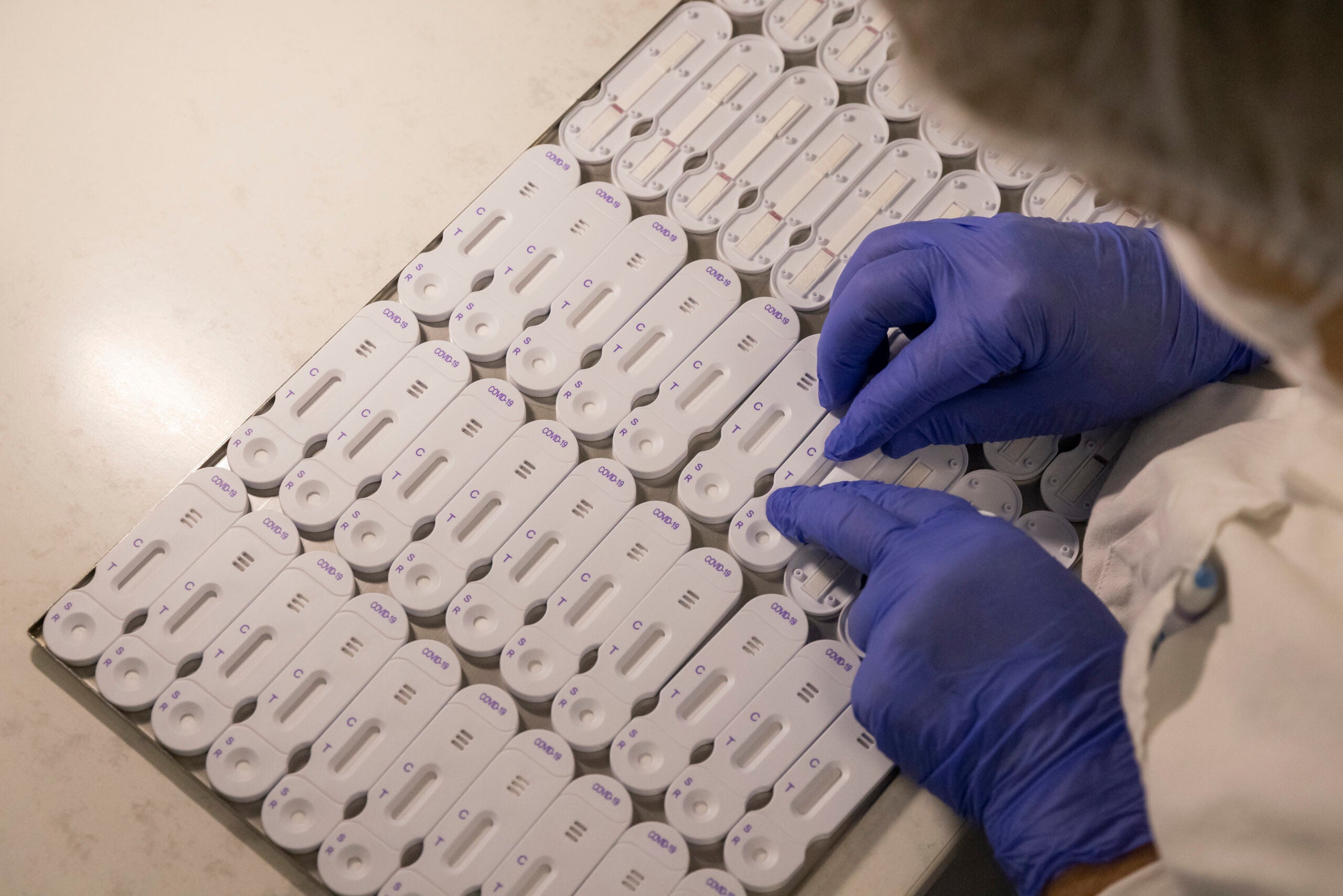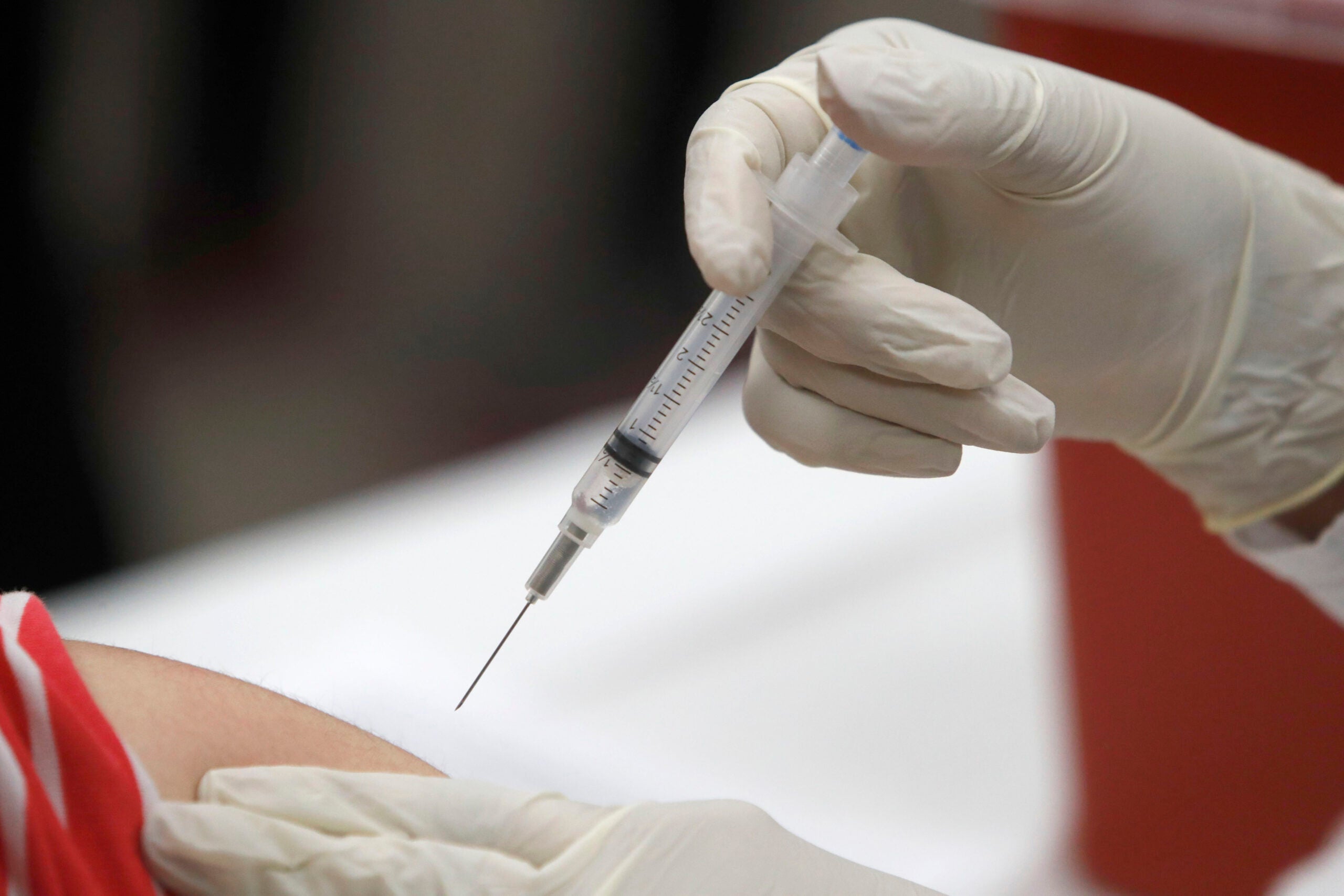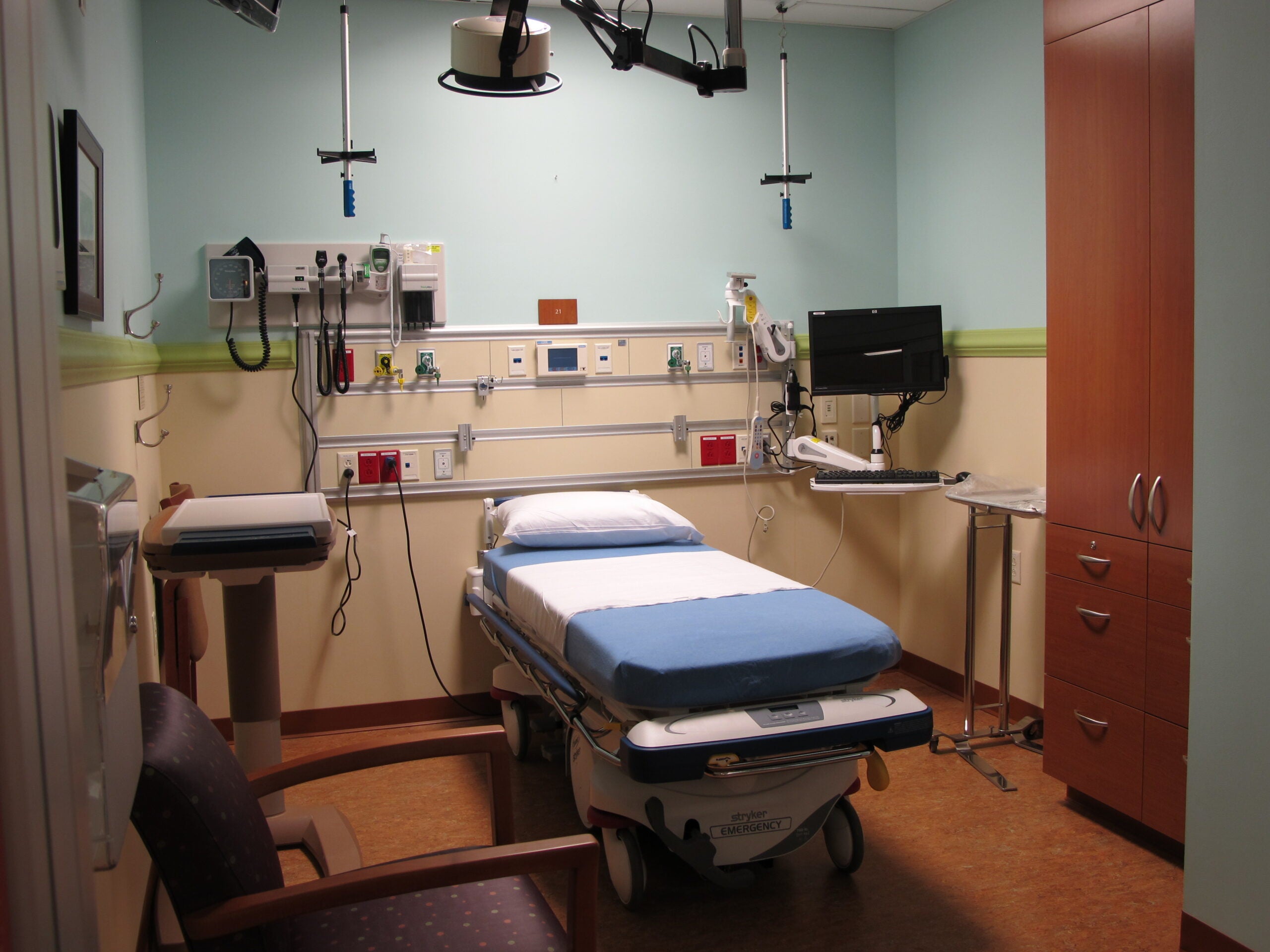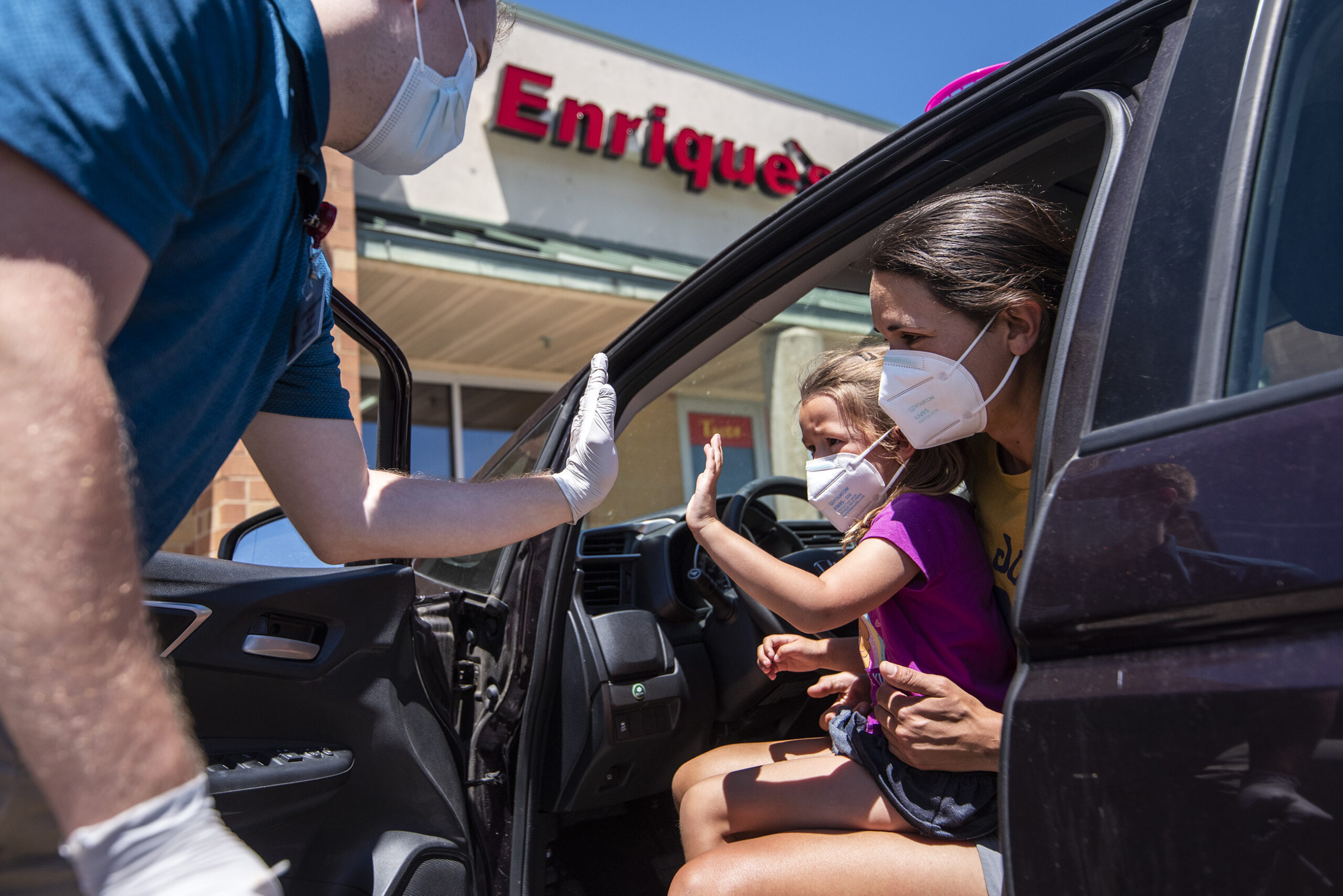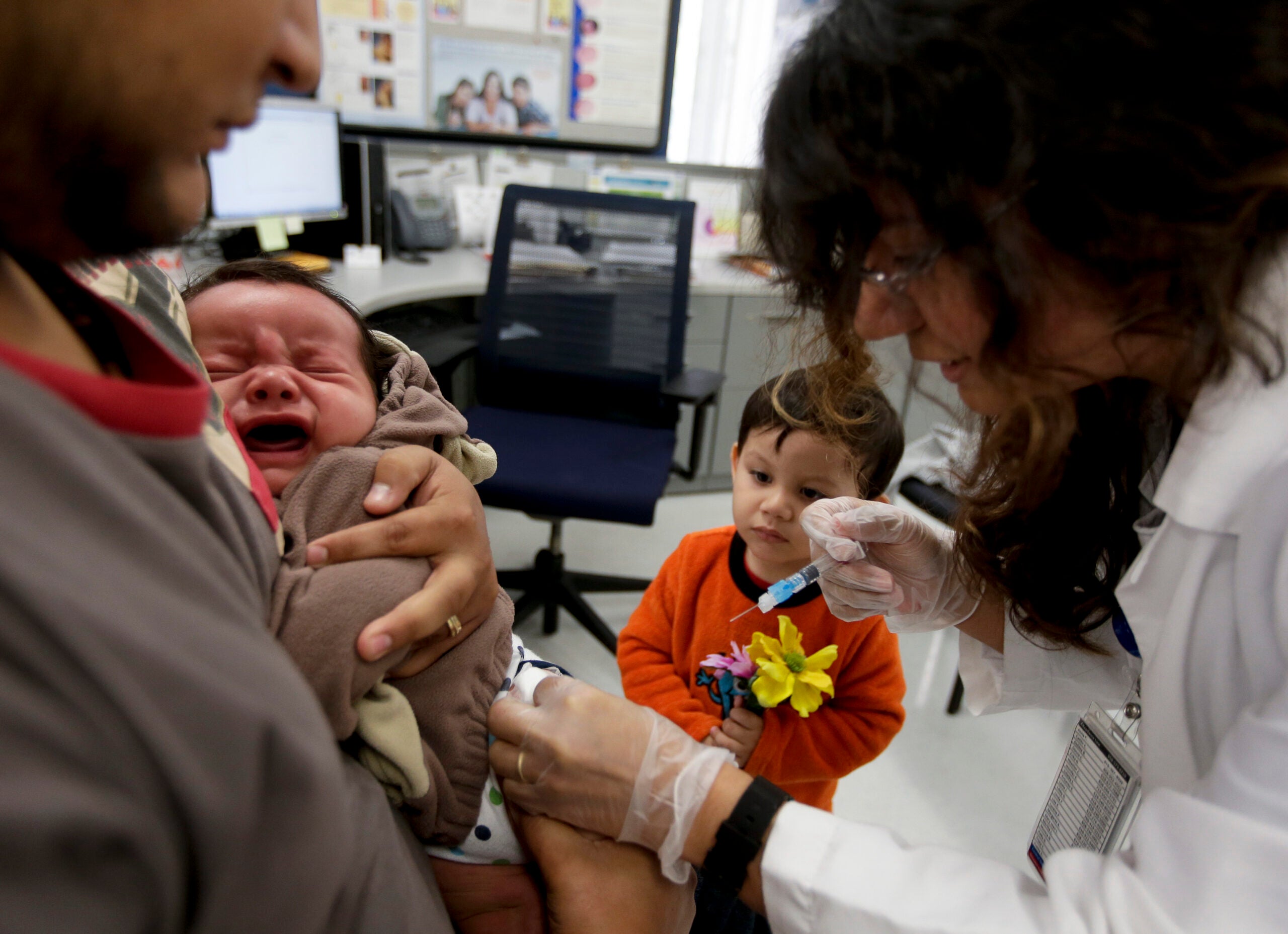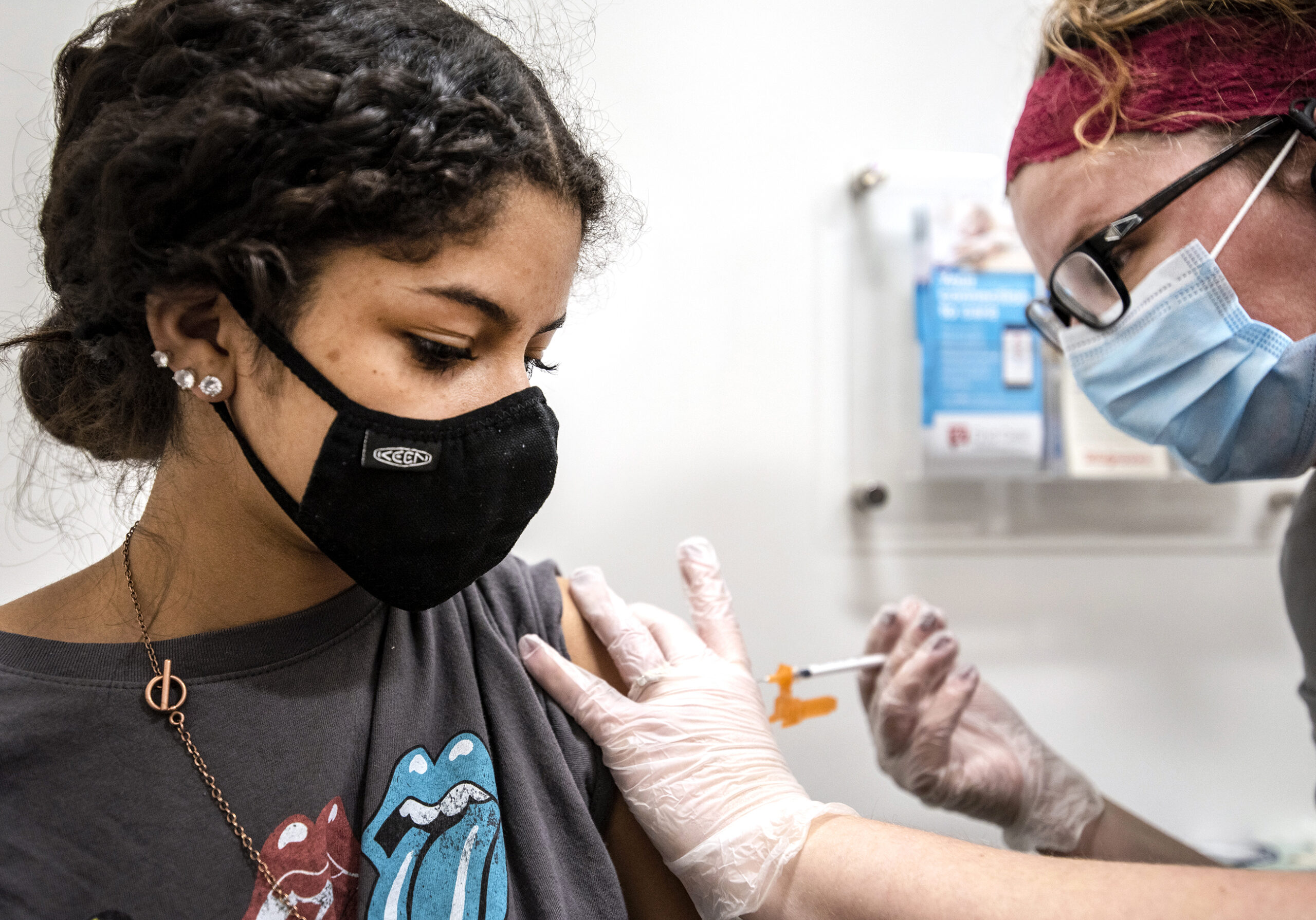New reports of COVID-19 cases are on the rise again in Wisconsin, based on the latest data published by the state Department of Health Services. The seven-day average of positive COVID-19 tests has doubled in the last three weeks, from 3 percent to 5.9 percent as of Monday.
“We’re seeing a rise, and a sustained rise,” said Dr. Ben Weston, chief health policy advisor for Milwaukee County. “Even though our numbers are still relatively low, it is a trend in the wrong direction.”
Community levels of COVID-19 remain low in every county, according to the Centers for Disease Control and Prevention’s guidelines, which set those levels based on the number of cases and hospital capacity in a community.
Stay informed on the latest news
Sign up for WPR’s email newsletter.
While the overall number of cases has remained low, Weston noted that’s not likely to provide as clear a picture of COVID-19 spread as it used to, since the use of at-home tests — which aren’t automatically reported in county or state data — is on the rise.
Weston said Milwaukee County used to average about 5,000 tests per day, with 10,000 during the height of the omicron surge. Last week, Milwaukee’s seven-day average number of tests was 1,700. At the state level, the highest number of tests last week was about 18,000 — down from 60,000 in January, as omicron was peaking.
Wisconsin has been monitoring wastewater for SARS-CoV-2, which officials say can help pinpoint where the disease is on the rise and alert health officials to possible trends.
“There’s no one single data source that’s perfect,” said Dr. Jonathan Meiman, the state’s chief medical officer and epidemiologist for environmental and occupational health. “We try to find all together complimentary ways of looking at the same issue to try to get a more holistic picture of what’s actually going on.”
Wastewater monitoring in Milwaukee, Kenosha, Racine and St. Croix counties, for example, has shown a major increase in virus concentration over the past week.
“There are a handful of fairly consistent week-over-week increases that are consistent with increasing transmission in the community,” Meiman said. “I would say, at the same time, the levels are still low.”
Meiman said DHS can’t yet map the virus concentration into an estimate of how many positive COVID-19 cases would be in the area, but that in the past, increases in the virus in wastewater have mapped onto increases in positive tests. Even in the current increasing areas, Meiman said, there hasn’t been such a spike in wastewater detection that he’d expect a corresponding spike in positive cases.
About 64 percent of Wisconsinites have received at least one dose of a COVID-19 vaccine, which is available to everyone ages 5 and up. Vaccine manufacturer Moderna is seeking Food and Drug Administration approval to offer a vaccine for younger children. A second round of booster shots is available to certain age groups and medically vulnerable populations.
Although the rates of death and hospitalization from the disease have slowed in Wisconsin, recent research has linked the illness to other damaging health consequences. Some people contract long COVID, a chronic illness with varied symptoms. COVID-19 may cause changes to the brain, including tissue damage, and researchers have linked the disease to erectile dysfunction.
In Wisconsin, 12,862 people have died from COVID-19 since the beginning of the pandemic with an additional 1,500 deaths most likely COVID-19 related, according to DHS. The United States as a whole is approaching 1 million deaths from COVID-19.
___________________________
Wisconsin Public Radio, © Copyright 2025, Board of Regents of the University of Wisconsin System and Wisconsin Educational Communications Board.
